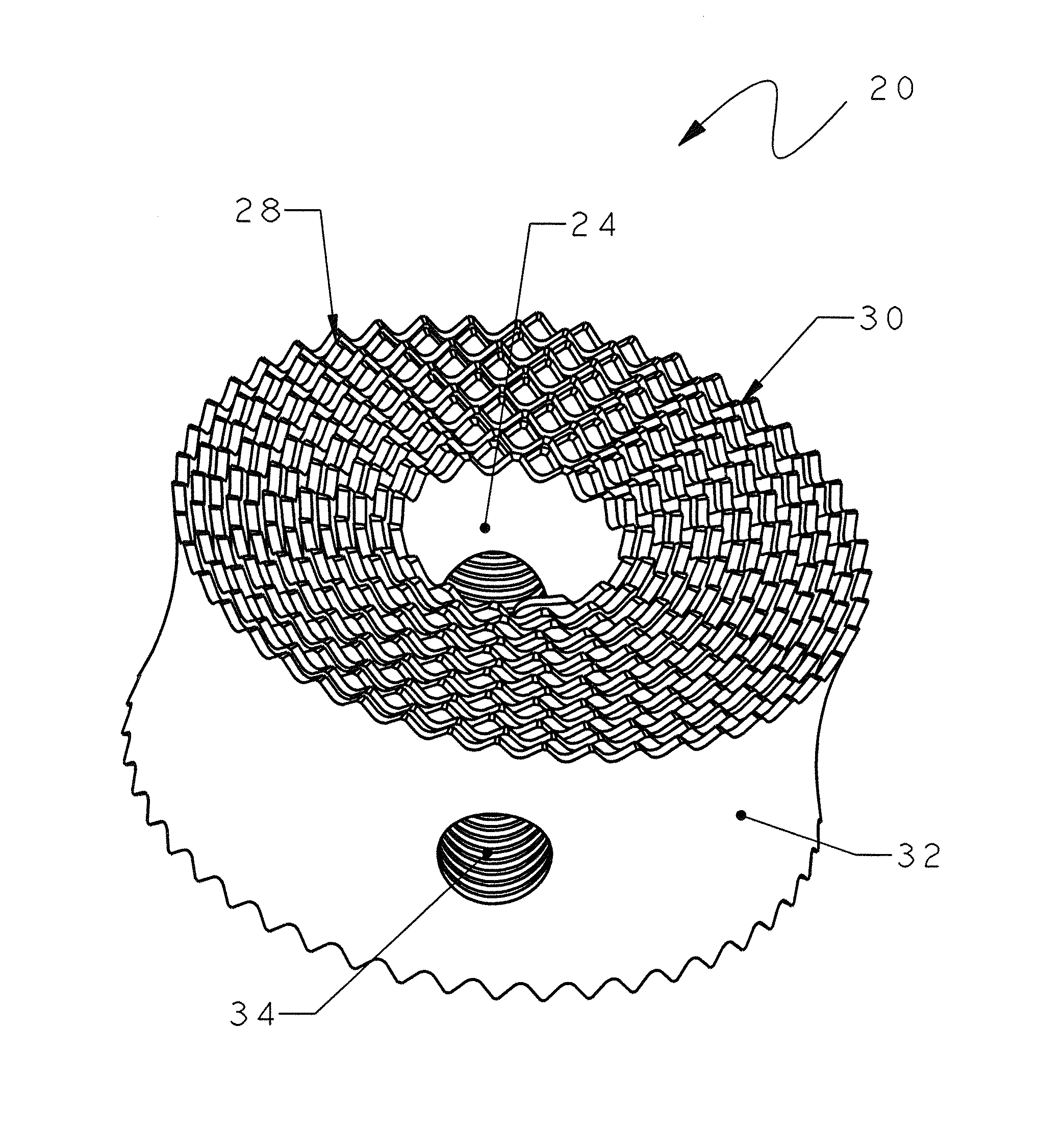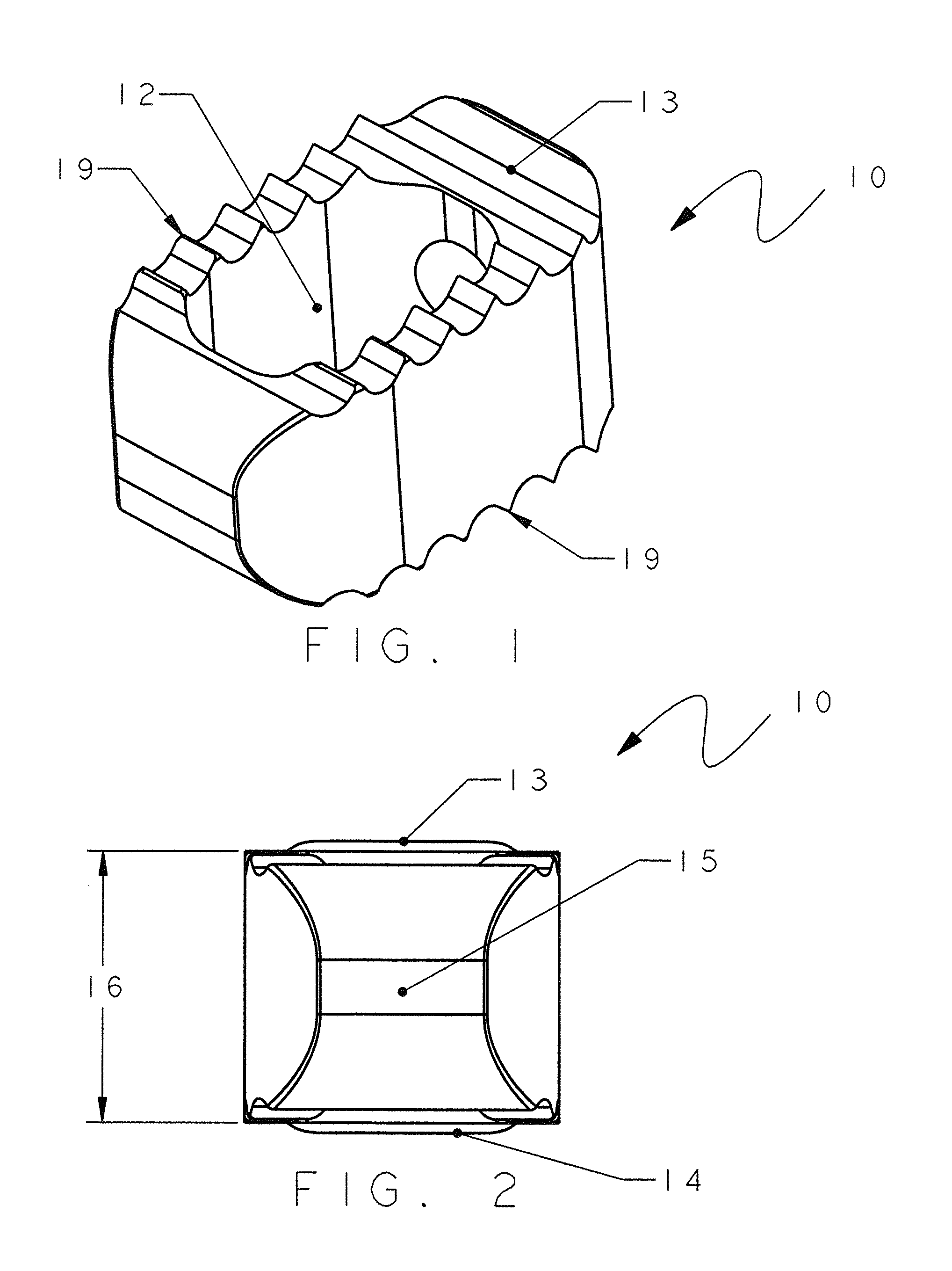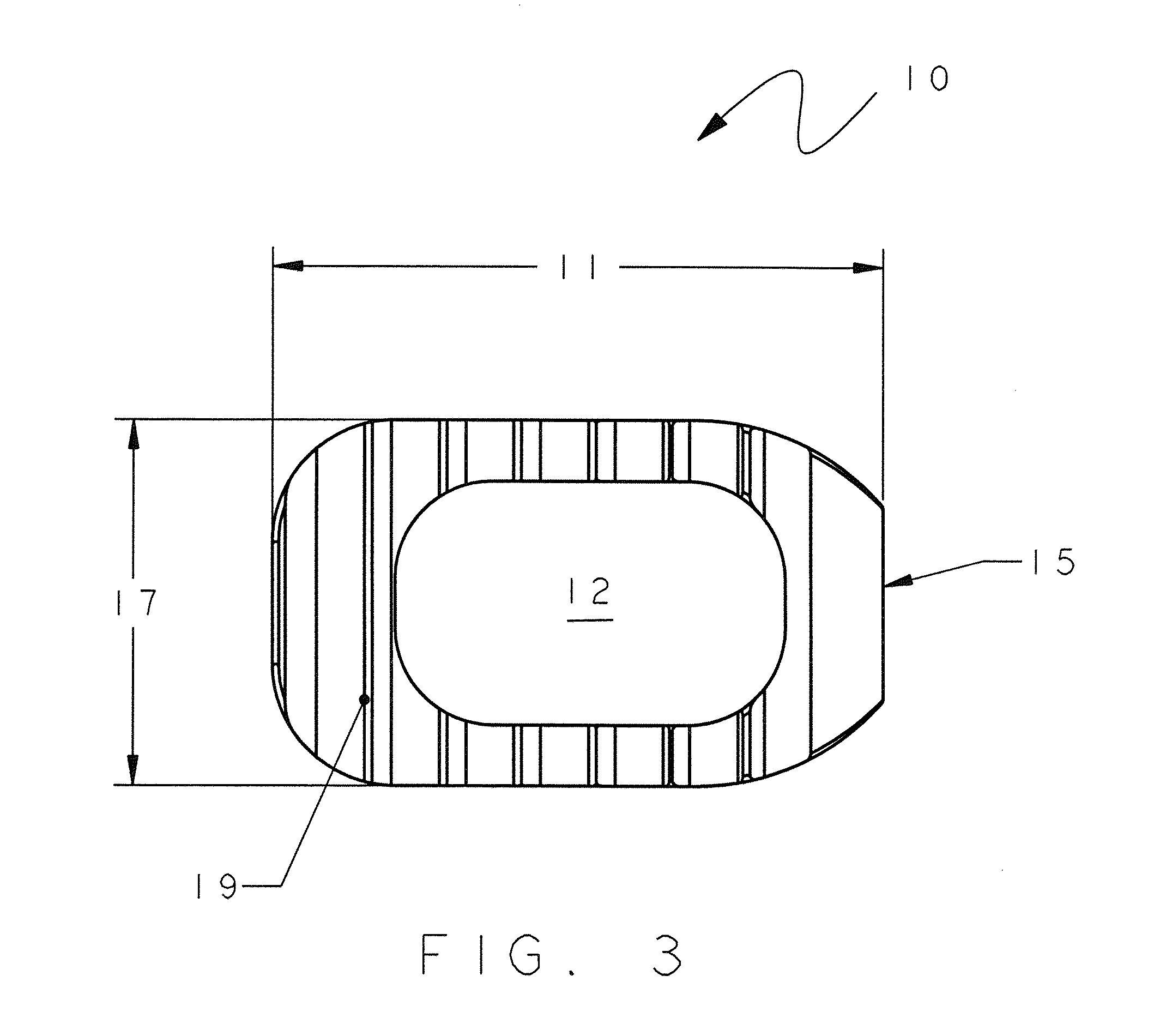In-situ formed spinal implant
a spinal implant and incision site technology, applied in the field of spinal fusion or arthrodesis, can solve the problems of increasing patient recovery time, increasing tissue disruption at and around the incision site, etc., and achieves the effects of preventing expulsion, reducing the risk of infection, and increasing heigh
- Summary
- Abstract
- Description
- Claims
- Application Information
AI Technical Summary
Benefits of technology
Problems solved by technology
Method used
Image
Examples
Embodiment Construction
[0061]Referring to FIGS. 1-4A, a prior art implant is shown and generally designated 10, particularly designed for use as in spinal fusion or arthrodesis. However, it is contemplated that the present implant is suitable for use with other types of surgical procedures including, vertebral compression fractures, and as a minimally invasive disc replacement, or the like. The device 10 is preferably machined from bar stock; however other fabrication techniques are contemplated including injection molding. The materials used to manufacture the device 10 include polyetheretherketone (PEEK), titanium alloy, ceramic, bone, carbon fiber, or stainless steel, as is known in the art.
[0062]More specifically, the prior art implant 10 typically includes six sides and an opening defining a passage 12 between upper and lower surfaces, respectively 13 and 14. The passage 12 is generally packed with bone or other natural or artificial materials for use in promoting fusion between an upper and lower ve...
PUM
 Login to View More
Login to View More Abstract
Description
Claims
Application Information
 Login to View More
Login to View More - R&D
- Intellectual Property
- Life Sciences
- Materials
- Tech Scout
- Unparalleled Data Quality
- Higher Quality Content
- 60% Fewer Hallucinations
Browse by: Latest US Patents, China's latest patents, Technical Efficacy Thesaurus, Application Domain, Technology Topic, Popular Technical Reports.
© 2025 PatSnap. All rights reserved.Legal|Privacy policy|Modern Slavery Act Transparency Statement|Sitemap|About US| Contact US: help@patsnap.com



